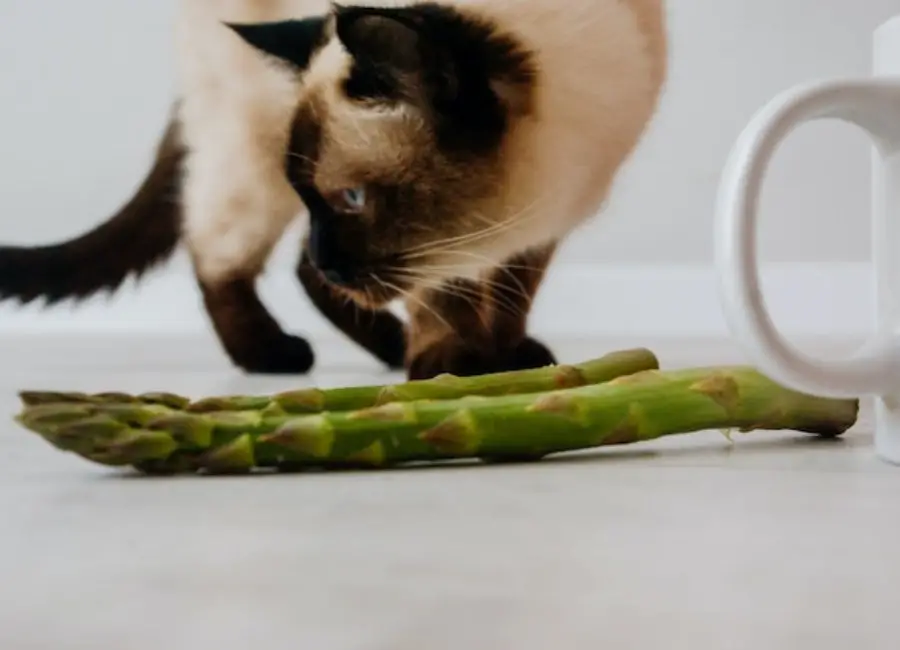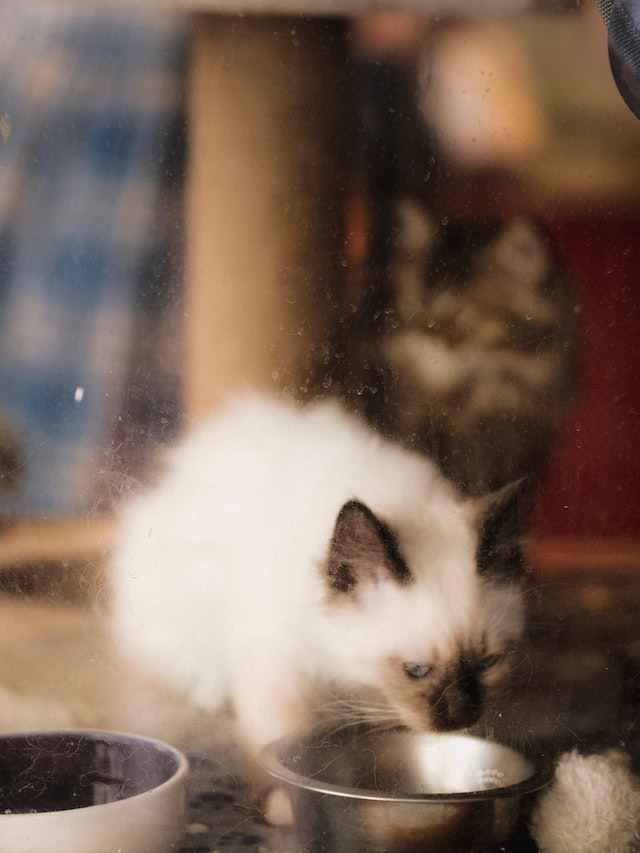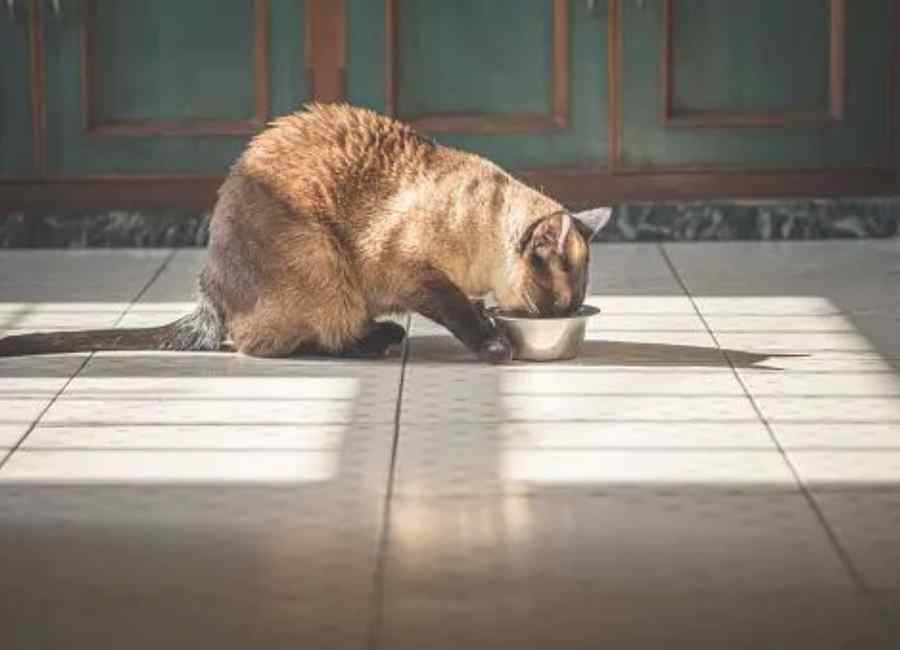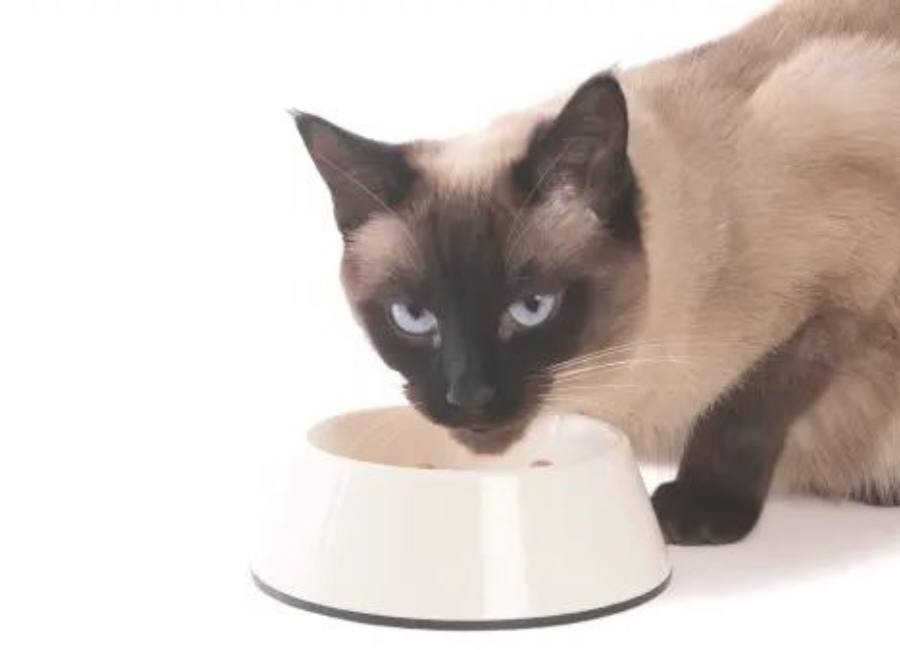9 Reasons For Siamese Cat Not Eating & Tips

Are you a proud owner of a beautiful Siamese cat who’s not eating their food lately? It’s not uncommon for cat owners to experience this issue. But, before you press the panic button, let’s take a look at some of the common reasons why your feline friend could be losing their appetite.
In this short blog post, we’ll explore some possible reasons for your Siamese cat’s unusual eating habits and give you some tips on how to help them get back to their normal routine. So, grab a cup of coffee, and let’s dive in!
Identifying the Signs of Appetite Loss in Siamese
It’s essential for Siamese cat owners to recognize the signs of appetite loss promptly. Some common indications include:
- Lethargy or reduced activity levels
- Avoidance of the food bowl
- Weight loss or sudden change in body condition
- Unwillingness to consume favorite treats
Why is My Siamese Cat Not Eating
There are various reasons why a Siamese cat is not eating, which include a sensitive stomach, gastrointestinal obstruction, stress, internal organ failure, chronic pancreatitis, cat flu, impaired sense of taste and smell due to medication, or pica.
These are just some of the potential causes and, it would be best to bring your Siamese cat to a veterinarian to determine the underlying cause of the problem.
Understanding Siamese Cats and Their Eating Habits
Siamese cats are intelligent and sociable animals, and their eating habits are influenced by various factors.
These feline friends often enjoy mealtime interactions with their owners, and any changes in this routine may affect their appetite.
Additionally, Siamese cats are known for their sensitivity to environmental changes, which can lead to appetite disturbances.
Reasons Why a Siamese Cat Might Stop Eating

The following are some of the most common reasons why a Siamese cat might stop eating:
1. Hairballs issues
Siamese cats have stunning coats, but their grooming practices can result in hairballs. Cats swallow clumps of hair while grooming themselves, forming hairballs. These hairballs may make you feel uncomfortable and make you lose interest in food.
Regular brushing and grooming can help your cat consume less hair, which will decrease the likelihood of hairballs. You can also feed them specialized cat food made to control hairballs or use hairball-prevention products.
2. Stress and Anxiety
Cats are routine-oriented creatures, so any disruptions to their daily routine can cause stress and anxiety. They may feel uneasy when something changes, such as when they move into a new house, meet new family members, hear loud noises, or even when their usual feeding spot changes.
Cats may become uninterested in eating when under stress. Create a secure and tranquil environment for your Siamese cat to solve this. Establish a peaceful area where they can hide out and feel safe.
Giving them places to hide, such as cat trees, boxes, or cozy corners, can also make them feel secure. Shower them with love, tender touches, and reassuring words to give them comfort during these times of apprehension.
Learn more about separation anxiety in Siamese cats.
3. Illness or Pain
A Siamese cat’s lack of appetite may be a sign that they are ill. Although cats are skilled at masking symptoms of illness, a lack of appetite is frequently a first sign that something may be wrong.
Check your cat carefully for other symptoms like lethargy, vomiting, diarrhea, or any changes in behavior if you notice that their eating habits have changed. Make a prompt appointment with your veterinarian if you notice anything unusual.
Only a qualified expert can perform a complete examination and identify any potential health issues. Early diagnosis and treatment can significantly impact your cat’s prognosis.
4. Dental Issues
Cats frequently experience dental issues, which can make it difficult for them to eat. Cats with dental problems may have difficulty chewing or experience discomfort while eating.
Look for any indications of bleeding, swelling, redness, or bad breath in the mouth of your Siamese cat. These might be signs of dental issues like tooth decay, gum disease, or broken teeth.
A consistent dental care routine and regular dental examinations by your veterinarian can help avoid these problems. For cats with dental pain, feeding wet food can also make chewing easier.
5. Changes in Diet
Due to their habitual nature, cats may experience stomach discomfort and appetite loss from abrupt dietary changes. Do it gradually over a few days if you need to transition your Siamese cat to a new food brand or type.
Start by blending a small quantity of the new food with their current one, then gradually increase the new food’s proportion. This reduces the likelihood that the new food will be outright rejected and aids their digestive system in adjusting to the change.
6. Food Preferences
Just like humans, cats have unique tastes. It’s possible that your Siamese cat doesn’t like the flavor or texture of the food you’re serving. To determine what they prefer, it is imperative to sample various flavors and textures.
While some cats might prefer fish-based food, others might prefer chicken or beef. To find out which flavors your cat prefers, try a variety of high-quality cat foods.
7. Food Temperature
Some cats can be sensitive to changes in food temperature. They might not find the food appetizing if it is too hot or too cold.
It can be more enticing to serve food at room temperature or slightly warmed. However, take care not to overheat the food because cats have delicate tongues and might shy away from hot food.
8. Environmental Changes
Cats are territorial creatures, and major changes in their surroundings can be upsetting. Your Siamese cat might feel anxious and uncertain if you move to a new house, rearrange your furniture, or add a new pet.
Maintaining their feeding schedule and making an effort to keep their feeding area familiar is crucial during these transitions. Having comforting smells and objects nearby can make you feel secure and at ease during these changes.
Cats’ senses, including their senses of taste and smell, may deteriorate with age. A decrease in food interest may result from this.
If you have a senior Siamese cat, think about introducing more flavorful and enticing foods to pique their appetite.
Older cats may have trouble eating large amounts in one sitting, so smaller, more frequent meals may be beneficial to them.
Immediate Steps to Take When a Siamese Cat Stops Eating
When a Siamese cat stops eating, it could be an indication of an underlying problem. It is, therefore, essential to take immediate steps to resolve the issue and prevent further complications.
Here are some steps you can take:
A. Assess the situation and look for potential stressors: The first step you should take when a Siamese cat stops eating is to determine the cause of the problem. Check if there are any changes in the cat’s environment that may be causing it to feel stressed or anxious. Siamese cats are particularly sensitive to changes in their surroundings and may stop eating if they feel threatened or uncomfortable.
B. Examine the cat for any visible health issues or discomfort: It is essential to check the cat for any visible health issues or discomfort. Check for any signs of illness or injury, such as lethargy, vomiting, diarrhea, or a decrease in appetite. You can also check for any signs of dental problems or pain in the mouth.
C. Offer a variety of palatable foods to encourage eating: When a Siamese cat stops eating, it may be due to a lack of interest in the food being offered. You can try offering different types of foods, such as wet or dry food, to encourage the cat to eat. You can also try offering different flavors until you find one that the cat likes.
D. Ensure the cat has access to fresh water at all times: It is crucial to ensure the cat has access to fresh water at all times. A lack of water could further exacerbate the issue and lead to dehydration. You can also try adding a bit of water to the cat’s food to make it more appealing.
E. Monitor the cat’s behavior and any further changes: It is essential to monitor the cat’s behavior and any further changes. If the cat continues to refuse food or shows any further signs of illness, you should contact a veterinarian immediately. Early intervention can help prevent further complications and ensure the cat receives the necessary treatment.
Home Remedies to Encourage Eating in Siamese Cats

Siamese cats are known for their picky eating habits, which can be frustrating for their owners.
Fortunately, there are several home remedies and solutions that can encourage Siamese cats to eat:
A. Creating a Stress-Free Environment
Siamese cats can be sensitive to stress, and a stressful environment can lead to a loss of appetite. It’s important to create a calm and stress-free environment for your cat. This can be done by providing a comfortable, quiet space for your cat to eat. Avoid feeding your cat in a noisy or busy area of your home.
B. Implementing a Regular Feeding Schedule
Establishing a regular feeding schedule can help your Siamese cat develop a healthy eating pattern. Offer your cat food at set times each day, and stick to the schedule as closely as possible. This can help your cat feel more secure and establish a routine.
C. Introducing Enticing and Nutritious Food Options
Siamese cats can be picky eaters, but offering a variety of enticing and nutritious food options can encourage them to eat. Experiment with different types of wet and dry food to find what your cat likes best. You can also try warming the food slightly or adding some chicken broth to make it more appealing.
D. Using Food Puzzles and Interactive Feeding Methods
Using food puzzles and interactive feeding methods can stimulate your Siamese cat’s natural hunting instincts and make mealtime more engaging. Puzzle feeders and treat-dispensing toys are available at pet stores or can be easily made at home.
E. Gently Encouraging the Cat to Eat Without Force
It’s important to avoid forcing your Siamese cat to eat or becoming overly anxious about their eating habits. This can create more stress and anxiety for your cat, leading to a further loss of appetite.
Instead, gently encourage your cat to eat by offering food in a calm and comfortable environment and using positive reinforcement when they do eat. If your cat continues to have a decreased appetite or other concerning symptoms, it’s important to seek veterinary care.
Note: It is important to consult a veterinary professional before making any significant changes in a pet’s diet or lifestyle.
Learn more about what to give a cat with diarrhea and vomiting.
Long-term Measures for Maintaining Healthy Eating Habits in Siamese

Maintaining a stable and comfortable home environment:
- To maintain healthy eating habits, it’s important to create a stable and comfortable home environment that supports good dietary choices and routines.
- Keep the kitchen well-stocked with fresh and healthy foods, and make sure that meals are prepared in a clean and hygienic environment.
- Encourage family members to eat together and make mealtimes a pleasant and stress-free experience.
Regular veterinary check-ups and dental care:
- Regular veterinary check-ups and dental care are important for ensuring that pets are healthy and able to maintain good dietary habits.
- Dental problems can prevent pets from eating and enjoying their food, so it’s important to address any dental issues promptly.
- Regular check-ups can also help identify any underlying health issues that may affect your pet’s eating habits.
Gradual transitions to new foods to avoid allergies or sensitivities:
- When introducing new foods, it’s important to do so gradually to avoid allergic reactions or sensitivities.
- Monitor your pet’s response to new foods and make adjustments as necessary.
- Be aware of common food allergens in pets, such as wheat, dairy, and beef, and avoid these if your pet shows signs of sensitivity.
Ensuring ample opportunities for mental and physical stimulation:
- Mental and physical stimulation is important for maintaining healthy eating habits in pets.
- Provide your pet with regular opportunities for exercise and play, which can help them maintain a healthy weight and support good dietary habits.
- Mental stimulation, such as interactive toys and puzzles, can also help keep pets engaged and interested in their food.
Related Questions
How long can a Siamese cat go without eating?
Generally, a Siamese cat can go without food for two to three days. However, this may vary depending on the age, health, and weight of the cat.
What can I do if my Siamese cat is not eating?
If you notice that your Siamese cat is not eating, you should take them to a vet for a check-up. You can also try to offer different types of food or add some flavoring to their food to entice them.
Can stress affect my Siamese cat’s appetite?
Yes, stress is one of the common reasons for a Siamese cat to stop eating. It can be caused by changes in their routine, environment, or the introduction of a new pet or person.
Learn more about why your new cat is hiding and not eating.
What are some common health issues that can cause a Siamese cat to stop eating?
Dental issues, nausea, vomiting, dehydration, and kidney problems are some of the health issues that can cause your Siamese cat to stop eating.
How can I prevent my Siamese cat from losing its appetite?
To prevent your Siamese cat from losing appetite, you can make sure that they have a routine feeding schedule, feed them high-quality food, provide enough water, and make sure they have a stress-free environment. Regular vet check-ups can also help you identify any health issues before they become serious.
Learn more about why your cat is lethargic and not eating.
Conclusion
A Siamese cat not eating can be concerning, but with careful observation and prompt action, it can often be addressed effectively. Remember to consider possible causes such as stress, dental issues, illness, or environmental changes.
Providing a comfortable and stress-free environment, along with proper dental care and a nutritious diet, can go a long way in encouraging your Siamese cat’s appetite.
